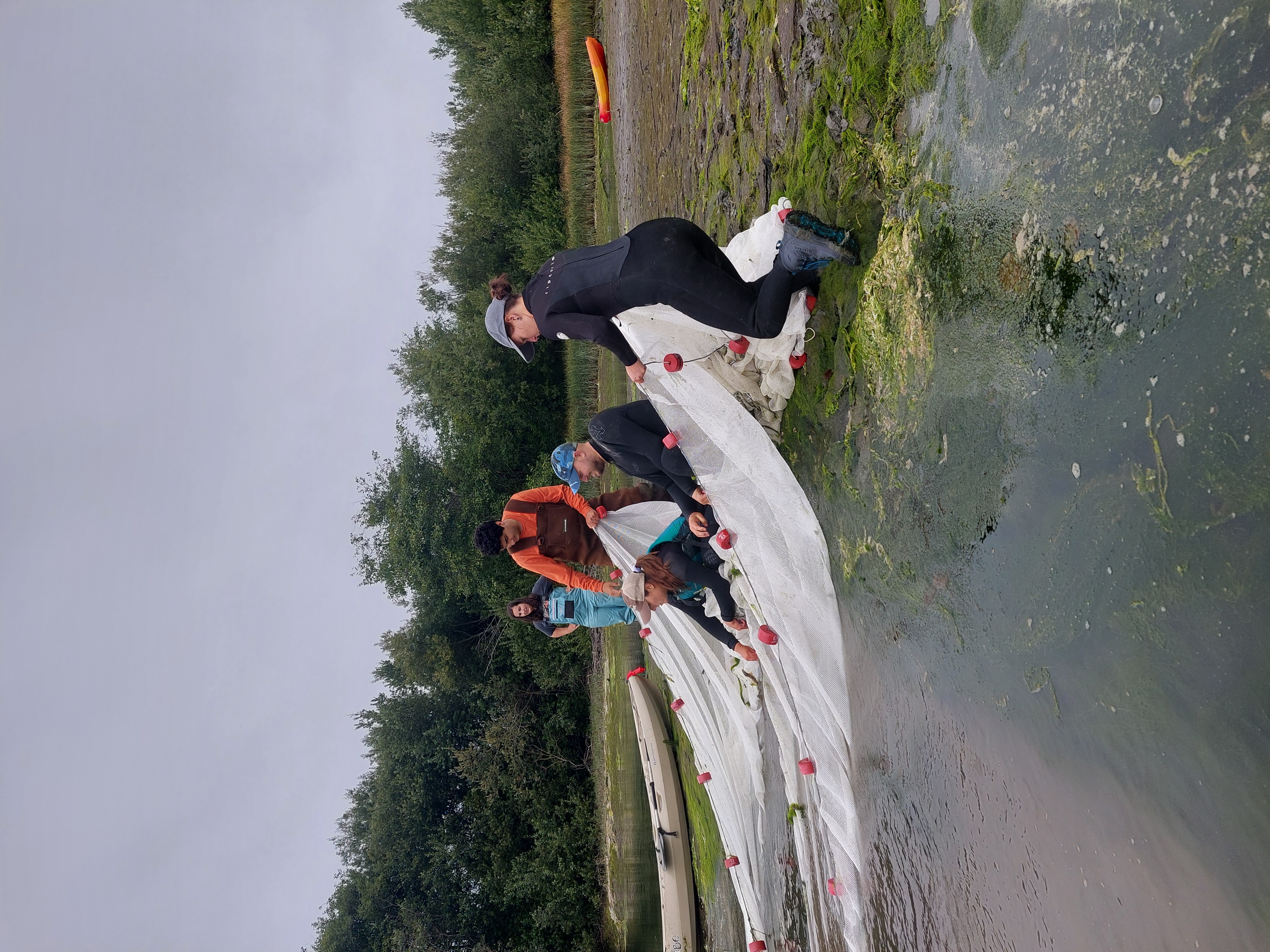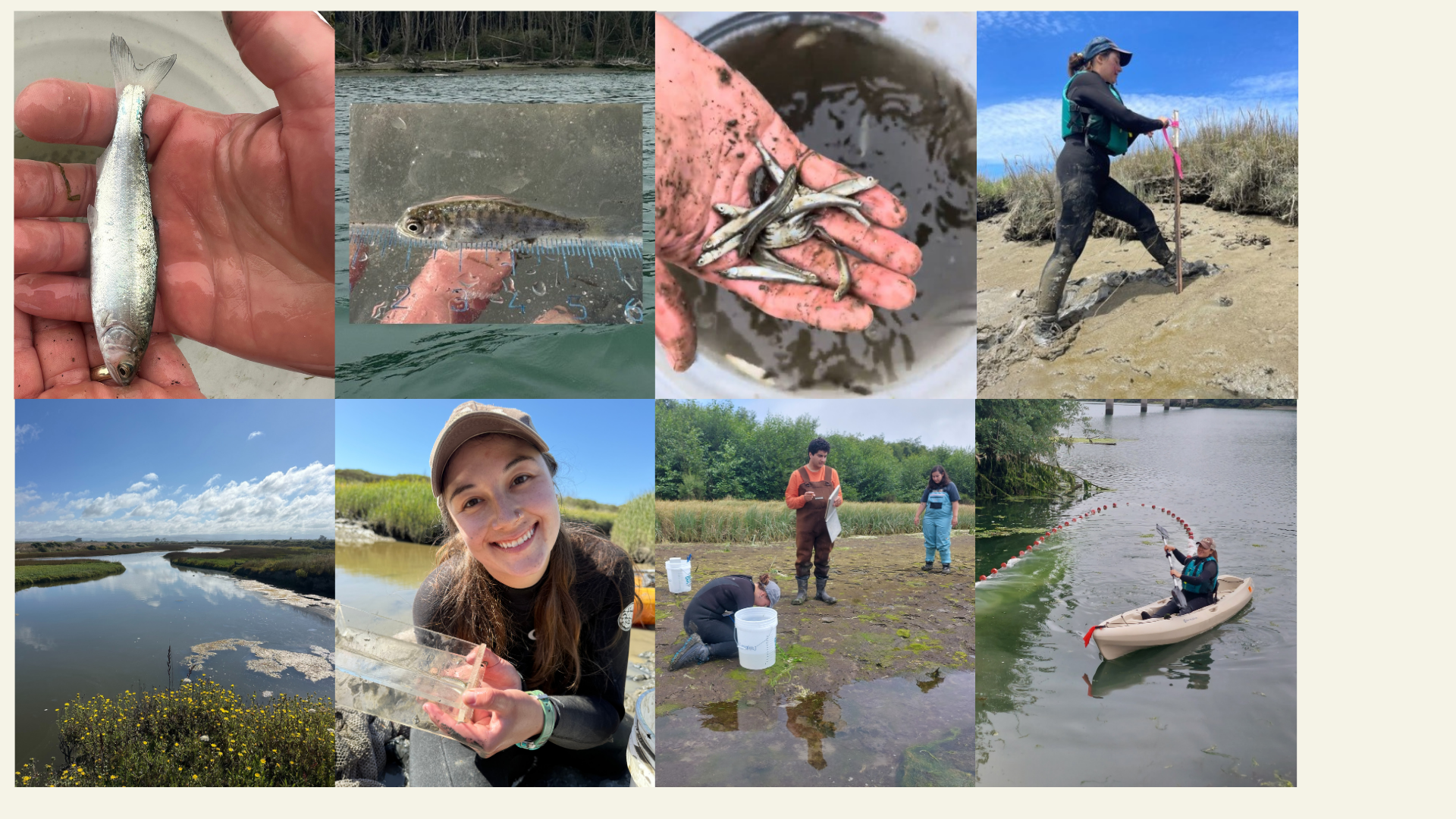Breadcrumb
Chinook Salmon


Estuaries serve as nurseries for many fish and invertebrate species, offering diverse rearing habitats. For Chinook Salmon, estuaries offer more foraging opportunities, a safe space away from marine predators, and gradual physiological acclimation to higher salinity areas. Yet, estuaries are among the most degraded and altered habitats. The Eel River Estuary in Northern California (Wiya’t) has a legacy of heavy modification, which results in significant changes to these habitats. Juvenile California Coastal Chinook Salmon are a threatened species, and the extent of their current use of the Eel River Estuary is largely unknown. Understanding how habitats are used by juvenile Chinook Salmon in the Eel River Estuary is essential to guide effective conservation and restoration efforts for this at-risk species. This research is conducted in collaboration with Blue Lake Rancheria and will investigate the spatial and temporal distribution of Chinook Salmon within different estuarine habitats and the factors that may influence the observed distributions.

Juvenile Chinook Salmon occurrence and fish community data will be collected using beach seines, habitat and environmental characteristics such as salinity, temperature, and dissolved oxygen will be measured to model environmental characteristics associated with occupancy, to understand which factors are linked to where the fish are found, even if not all Juvenile Chinook salmon are detected. Size spectrum analysis will be used to study ecological interactions, infer nursery function, and how the size structure of fish assemblages may be influencing juvenile Chinook occupancy trends within the estuary.

The objectives of this study are to identify seasonal and spatial patterns in the occupancy of juvenile Chinook Salmon, use size spectrum analysis to infer ecological characteristics of different habitats, and explore how productivity, predation risk, habitat, and environmental characteristics influence Chinook Salmon distribution patterns. Findings from this study will provide insights into the effectiveness of recent and future habitat restoration efforts to support juvenile Chinook Salmon in the Eel River Estuary. Collectively, this study will inform adaptive management and enhance the capacity to support stewardship and management of Tribal and state natural resources.
As warming temperatures caused by climate change continue and exceed tolerable rearing conditions, juvenile salmon are likely to spend less time in rearing habitats before outmigrating and enter the ocean at smaller sizes. When smaller fish migrate out to the ocean, fewer juveniles will survive through the first year of being in the ocean. As temperatures warm, the timing of when juvenile salmon leave estuaries and enter the ocean is likely to change. This could lead to a mismatch between their arrival and the ocean conditions they rely on to survive, like upwelling, which brings vital food to the surface. This can potentially reduce their chances of survival and limit habitat availability as temperatures rise. In addition to a warming climate, many other changes caused by climate change, such as rising sea levels, ocean acidification, extreme river flows, and more frequent and intense storm activity, will likely impact critical estuarine habitats function and quality.






